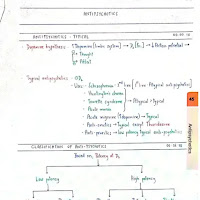Antipyretic Physiologic: Downloadable Resources (PDF & PPT)
Download comprehensive materials on antipyretic physiology, covering the mechanisms of fever reduction and the effects of antipyretic drugs on the body. These resources are available in both PDF and PPT formats, making them ideal for students, healthcare professionals, and anyone interested in understanding how these medications work. Download now for convenient offline access and study.
Keywords: Antipyretic, Physiologic, PDF, PPT, Download, Fever, Pharmacology, NSAIDs, Acetaminophen, Paracetamol, Mechanism of Action, Hypothalamus, Prostaglandins, COX Inhibitors, Temperature Regulation.
Antipyretic Physiologic: Understanding Fever Reduction
Antipyretics are medications that reduce fever. Fever, or pyrexia, is an elevation of body temperature above the normal range, typically caused by the body's response to infection, inflammation, or other underlying conditions. This document explores the physiological mechanisms of fever and how antipyretic drugs work to lower body temperature.
The Physiology of Fever
Fever is regulated by the hypothalamus, a region in the brain that acts as the body's thermostat. The process begins with the release of pyrogens, which are fever-producing substances. Pyrogens can be exogenous (originating from outside the body, such as bacterial toxins) or endogenous (produced within the body, such as cytokines like interleukin-1 (IL-1), interleukin-6 (IL-6), and tumor necrosis factor-alpha (TNF-α)).
Endogenous pyrogens stimulate the production of prostaglandin E2 (PGE2) in the hypothalamus. PGE2 is a key mediator of fever. It acts on the thermoregulatory center in the hypothalamus, increasing the set point for body temperature. This leads to physiological responses aimed at raising body temperature, including:
- Vasoconstriction: Narrowing of blood vessels in the skin reduces heat loss.
- Shivering: Involuntary muscle contractions generate heat.
- Increased Metabolism: The body's metabolic rate increases, producing more heat.
- Behavioral Changes: Feeling cold, seeking warmth.
Mechanism of Action of Antipyretic Drugs
Most antipyretic drugs work by inhibiting the synthesis of prostaglandins, particularly PGE2. The two main classes of antipyretics are:
- Nonsteroidal Anti-inflammatory Drugs (NSAIDs): These drugs, such as ibuprofen, naproxen, and aspirin, inhibit the cyclooxygenase (COX) enzymes. There are two main COX isoforms: COX-1 and COX-2.
- COX-1 is involved in various physiological functions, including protecting the stomach lining and maintaining kidney function.
- COX-2 is primarily induced during inflammation and contributes to the production of prostaglandins involved in fever, pain, and inflammation.
NSAIDs inhibit both COX-1 and COX-2, although some NSAIDs are more selective for COX-2. By blocking COX enzymes, NSAIDs reduce the production of PGE2, thereby lowering the hypothalamic set point and reducing fever.
- Acetaminophen (Paracetamol): The exact mechanism of action of acetaminophen is not fully understood, but it is believed to primarily act centrally (in the brain) to inhibit prostaglandin synthesis. It has weak anti-inflammatory effects. Unlike NSAIDs, acetaminophen does not significantly inhibit COX enzymes in the periphery, which explains its lack of anti-inflammatory activity and its lower risk of gastrointestinal side effects.
Clinical Uses of Antipyretics
Antipyretics are used to manage fever in a variety of conditions, including:
- Infections: Viral and bacterial infections are common causes of fever.
- Inflammatory Conditions: Conditions like rheumatoid arthritis can cause fever.
- Post-Surgical Fever: Fever can occur after surgery.
- Other Conditions: Certain cancers and other medical conditions can be associated with fever.
It's important to note that fever is often a beneficial response to infection, helping the body fight off pathogens. Therefore, the decision to use antipyretics should be made carefully, considering the underlying cause of the fever and the potential benefits and risks of treatment. In some cases, treating the underlying cause of the fever is more important than simply lowering the temperature.
Side Effects of Antipyretics
While generally safe when used as directed, antipyretics can have side effects:
- NSAIDs:
- Gastrointestinal upset (nausea, vomiting, heartburn)
- Gastric ulcers and bleeding (especially with long-term use)
- Kidney problems (especially with long-term use or in individuals with pre-existing kidney disease)
- Cardiovascular risks (increased risk of heart attack and stroke, especially with certain NSAIDs)
- Acetaminophen:
- Liver damage (especially with high doses or in individuals with pre-existing liver disease)
- Skin rash (rare)
It's crucial to follow recommended dosages and consult a healthcare professional before using antipyretics, especially in children, pregnant women, and individuals with underlying medical conditions.
Info!
If you are the copyright owner of this document and want to report it, please visit the copyright infringement notice page to submit a report.

